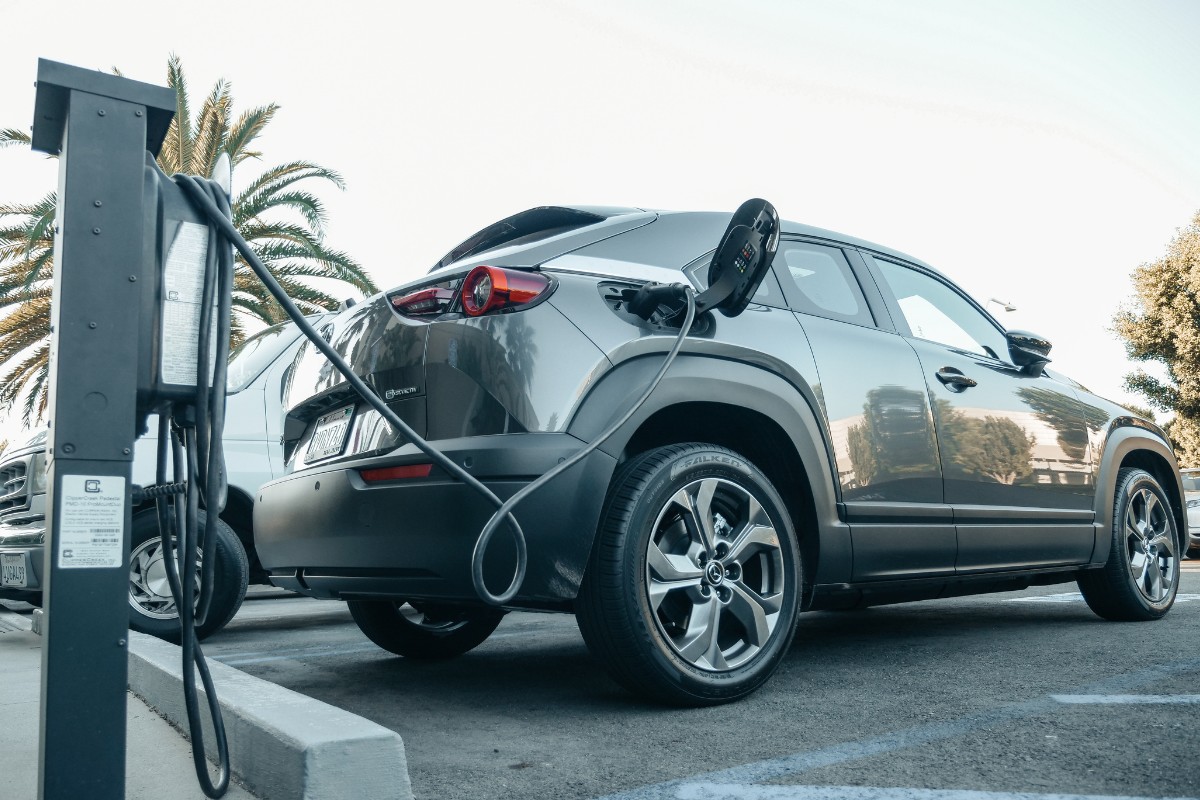The global automotive industry is an ever-changing and evolving, dynamic market.
We have researched and found several automotive industry statistics for your consideration and learning which you will read in this article.
We will discuss a vast array of topics including the economic and environmental impacts of this industry along with some demographics, trends, and its predicted trajectory.
Let’s dig into the automotive world.
Post Contents
- 1 Key Statistics
- 2 Top Automotive Industry Statistics in 2024
- 2.1 1. The global automotive industry in 2021 had an estimated worth of $2.86 trillion.
- 2.2 2. The overall American automobile manufacturing market is valued at $104.1 billion.
- 2.3 3. In China, the revenue generated in automotive manufacturing accounted for $763 billion.
- 2.4 4. The value of the automotive industry in Japan is $19.29 trillion yen.
- 2.5 5. The global automotive industry will reach over $6,070.4 billion by 2030.
- 2.6 6. The demand for EVs (electric vehicles) is expected to grow by 35%.
- 2.7 7. By 2035, EVs may account for 50% of all global automobile sales.
- 2.8 8. Autonomous driving may generate over $300 billion by 2035.
- 2.9 9. The automobile industry makes up 3% of the United States GDP.
- 2.10 10. India’s EV market is expected to reach $50 billion by 2030.
- 2.11 11. The American EV battery and power train market will grow to $128 billion.
- 2.12 12. Battery EVS and Plug-in Hybrid EVs grew by 137% in 2020 across Europe.
- 2.13 13. In 2022, Americans bought 13.75 million cars.
- 2.14 14. In the United States, the automotive repair sector is set to reach $953.87 billion by 2028.
- 2.15 15. Each year, the American automotive industry spends roughly $18 billion on R&D.
- 2.16 16. EV adoption rates are up by 168% all over the globe.
- 2.17 17. The sales volume of all car sales in China are expected to achieve 23.7 million units by the end of 2023.
- 2.18 19. Between auto insurance coverage and car loans, Americans spend an average of $698 billion per year.
- 2.19 20. The mileage range for EVs has been increasing.
- 3 Bonus Automotive Statistics
- 4 FAQS
- 4.1 Which countries are the biggest car producers?
- 4.2 What are the world’s best-selling car brands?
- 4.3 How many people does the global automotive industry employ?
- 4.4 What are the biggest challenges facing the automotive sector?
- 4.5 What is the global future of electric vehicles?
- 4.6 What’s the environmental impact of the automotive industry?
- 5 Conclusion
Key Statistics
- The global automotive industry in 2021 had an estimated worth of $2.86 trillion.
- The overall American automobile manufacturing market is valued at $104.1 billion.
- In China, the revenue generated in automotive manufacturing accounted for $763 billion.
- The value of the automotive industry in Japan is $19.29 trillion yen.
- The global automotive industry will reach over $6,070.4 billion by 2030.
- The demand for EVs (electric vehicles) is expected to grow by 35%.
- By 2035, EVs may account for 50% of all global automobile sales.
- Autonomous driving may generate over $300 billion by 2035.
- The automobile industry makes up 3% of the United States GDP.
- India’s EV market is expected to reach $50 billion by 2030.
Top Automotive Industry Statistics in 2024

1. The global automotive industry in 2021 had an estimated worth of $2.86 trillion.
Data from 2021 showed that the worldwide automotive industry had an estimated value of $2.86 trillion (USD).
Also, it was expected to reach $2.95 trillion (USD) by 2022.
The post-pandemic growth is slowly recovering but is still below the market size of 2019.
This market is expected to continue its current growth trajectory over the next decade and beyond.
(Statista)
2. The overall American automobile manufacturing market is valued at $104.1 billion.
In terms of location in regard to the automotive market size, the total American automobile manufacturing sector is worth $104.1 billion (USD) as of 2023.
The United States is one of the top three automobile manufacturing countries in the world.
(Zippia)
3. In China, the revenue generated in automotive manufacturing accounted for $763 billion.
Since China is one of the top three global automobile manufactures, we want to address its value in terms of the economy.
China’s automobile manufacturing market generated $763 billion (USD) as of 2023.
Between 2018 and 2023, the CAGR was 1.5%.
(IBISWorld)
4. The value of the automotive industry in Japan is $19.29 trillion yen.
Japan is one more of the top three countries in the automotive manufacturing sector.
In fact, it’s valued at $19.29 trillion yen according to 2022 data, which is nearly $129 billion (USD).
In 2021, this figure was $17.65 trillion yen which is over 118 billion (USD).
(Statista²)
5. The global automotive industry will reach over $6,070.4 billion by 2030.
It’s forecasted that the global automotive industry will reach over $6,070.4 billion (USD) by 2030.
During the forecast period between 2022 and 2030, the CAGR is expected to be 6.9%.
This data includes manufacturers like GM, Tesla, Fiat, Toyota, Volkswagen, Nissan, etc.
(GlobeNewswire)
6. The demand for EVs (electric vehicles) is expected to grow by 35%.

According to the IEA’s yearly Global Electric Vehicle Outlook, over 10 million electric cars were sold in 2022 all over the globe.
Moreover, it’s forecast that this figure will experience an uptake of 35%, reaching 14 million in 2023.
Furthermore, China accounts for 60% of the global EV market.
(iea.org)
7. By 2035, EVs may account for 50% of all global automobile sales.
The current forecast for EV sales is that this sector will account for half of all global car sales.
Moreover, EV sales are expected to rise to around 73 units in 2040 which is an increase of about 2 million from the 2020 market.
In several developed countries, the EV sales share is expected to be more than 80%.
(Goldman Sachs)
8. Autonomous driving may generate over $300 billion by 2035.
The value of autonomous driving (AD) could become more popular over the coming years.
It could literally revolutionize how people get from place to place.
According to existing research, AD systems in vehicles provide an overall more enjoyable transportation experience and are safer and more convenient.
(McKinsey & Company)
9. The automobile industry makes up 3% of the United States GDP.
In terms of adding to the Gross Domestic Product (GDP) in the United States, the automotive industry accounts for 3% of this comprehensive measurement of the nation’s economy.
For perspective, the finance, insurance, rental, real estate, and leasing industries contribute to 20.2% of the nation’s GDP, which is the largest share.
(Zippia)
10. India’s EV market is expected to reach $50 billion by 2030.
India may not be one of the top vehicle manufacturers in the world, but the people there do buy cars.
The EV market is thriving in India and is expected to reach $50 billion (USD) by 2030.
Furthermore, it’s showing an impressive CAGR of 9% across the total automotive industry.
(Appic Softwares)
11. The American EV battery and power train market will grow to $128 billion.

According to data, the American EV battery and power train market will grow to $128 billion (USD) by 2035.
In 2021, this market size was $10 billion, which shows it’s expected to see massive growth over the next 13 years.
With all the controversy and scrutiny happening about EV batteries, could they be resolving those issues now?
(pwc)
12. Battery EVS and Plug-in Hybrid EVs grew by 137% in 2020 across Europe.
Data reveals that Europe is overtaking China’s spot in the plug-in hybrid (PHEV) market.
Sales for both BEV and PHEV increased by 137% in Europe during 2020 alone.
Together, Europe and China are both driving forces in EV sales growth.
The United States is lagging behind Europe and China even though it’s another driving force in EV sales as well.
(Exploding Topics)
13. In 2022, Americans bought 13.75 million cars.
In 2022, Americans bought about 13.75 million cars and trucks.
For perspective, in 2020.
Americans bought 14.5 million cars and trucks, which means there’s been a decline in sales since 2020.
This is due to the challenging recovery from 2020’s global pandemic where automobile sales took a dive.
(Zippia)
14. In the United States, the automotive repair sector is set to reach $953.87 billion by 2028.

The United States being one of the big three in the automotive industry, will also see growth in the repair sector.
In America, the automotive repair sector is set to reach $953.87 billion by 2028.
(Appic Softwares)
15. Each year, the American automotive industry spends roughly $18 billion on R&D.
The automotive industry in the United States spends roughly $18 billion (USD) on research and development (R&D) annually.
This may seem like a lot of money for most of us, but car companies are working to create a better driving and riding experience for automobile owners.
That’s what they are investing billions in.
(Appic Softwares)
16. EV adoption rates are up by 168% all over the globe.
No matter where you stand on the electric vehicle topic, the truth is that EV adoption rates are up by 168% worldwide.
In 2020, EV sales were estimated at over 3 million units, which is more than 4% of the overall global automobile sales.
This figure is expected to reach 14 million by the end of 2023.
(Exploding Topics)
17. The sales volume of all car sales in China are expected to achieve 23.7 million units by the end of 2023.
If there was any doubt about China’s dominance in the automotive market, this statistic should erase that doubt.
The sales volumes among all kinds of car sales in China are predicted to reach about 23.7 million units.
(ZipDo)
18. Between 2020 and 2021, the price of preowned vehicles saw an increase of 17%.
As inflation has people buying cars and keeping them longer and/or are buying preowned (used) cars, the demand exceeded the supply between 2020 and 2021 resulting in a 17% price increase.
In 2020, the average price of a preowned car was $23.371, which quickly grew to $27,297 by the second quarter of 2021.
In 2019, used car prices were declining.
What a vast change in pricing over a short time.
(Zippia)
19. Between auto insurance coverage and car loans, Americans spend an average of $698 billion per year.
Americans with vehicles spend an average of $698 billion (USD) per year on car loans and auto insurance coverage.
The average car loan payment in America is $725 for a new car and $516 for a preowned one.
Moreover, the average cost for full insurance coverage is $167 a month or $2,008 annually.
That should give you a good idea of how my automobile owners are in America.
(Appic Softwares)
20. The mileage range for EVs has been increasing.

As the EV market improves their cars and how many miles they can go on a single charge, we see Tesla is always working on that factor.
The 2020 Tesla Model S has a mileage range of 400 miles on a single charge.
Other EVs from Hyundai, Chevrolet, Nissan, Kia, and others offer affordable EVs with single charge mileage ranges of between 200 and 250 miles.
(Exploding Topics)
Bonus Automotive Statistics
- The average gas-fueled car gets 25 miles per gallon.
- Data says that vehicles are responsible for around 16% of global greenhouse emissions.
- The global EV market is expected to reach $339 billion (USD) by 2028.
- Self-driving cars may save up to 325,000 lives a year in America.
- There has been a significant rise in the cost of vehicle ownership in recent years.
- Automakers are dedicated to developing more environmentally friendly and more fuel-efficient cars.
- The average car lasts for around 11.5 years.
- The average miles driven by Americans is 14,000 miles.
- Supply chain disruptions hurt automobile sales.
- There are 50,000 autonomous vehicles on the road.
- Germany sold 2.67 million vehicles in 2022.
- China sold over 5 million commercial vehicles in 2020.
- Germany sold more than 3.5 million cars in 2020.
- Volkswagen was a top performing car company in 2020 with a revenue of over $295 million.
- Toyota’s 2020 revenue was reported at over $256 million.
FAQS
Which countries are the biggest car producers?
The world’s biggest car producers are in China, Japan, and the United States.
These are the top three in the world.
India and Germany are in the top ten among the biggest car consumers.
What are the world’s best-selling car brands?
Worldwide the best-selling automobile brands include Toyota, Volkswagen, and Nissan as the top three.
Of these car companies, Toyota is the most dedicated to producing environmentally friendly cars with Volkswagen following close behind.
How many people does the global automotive industry employ?
More than 14 million people are employed in the automotive industry either directly or indirectly.
The average hourly pay of an employee working at a car dealership is $25.76 as of 2023.
More than 2 million of the 14 million automotive workers are in America.
What are the biggest challenges facing the automotive sector?
The top challenges facing the automotive industry include environmental concerns, the rising cost of fuel, and the need for better technological innovation.
What is the global future of electric vehicles?
Currently, the future of electric vehicles is rapidly growing across the globe as some countries try to phase out fossil fuel powered vehicles.
The adoption rate of EVs is showing how the new generation wants to try new things like electric cars.
What’s the environmental impact of the automotive industry?
According to sources, greenhouse gas emissions and pollution from car manufacturing and usage are significant concerns.
However, technology and regulations are driving a shift to more sustainable and cleaner vehicles.
Conclusion
Not only have we looked at the statistics about the overall automotive industry, we have also looked at specific segments like EVs and ADs.
Our sources have shown us how much higher the adoption of EVs have become all over the globe, but especially in China and Europe.
We hope you feel more enlightened after reading these global automotive industry statistics.






























